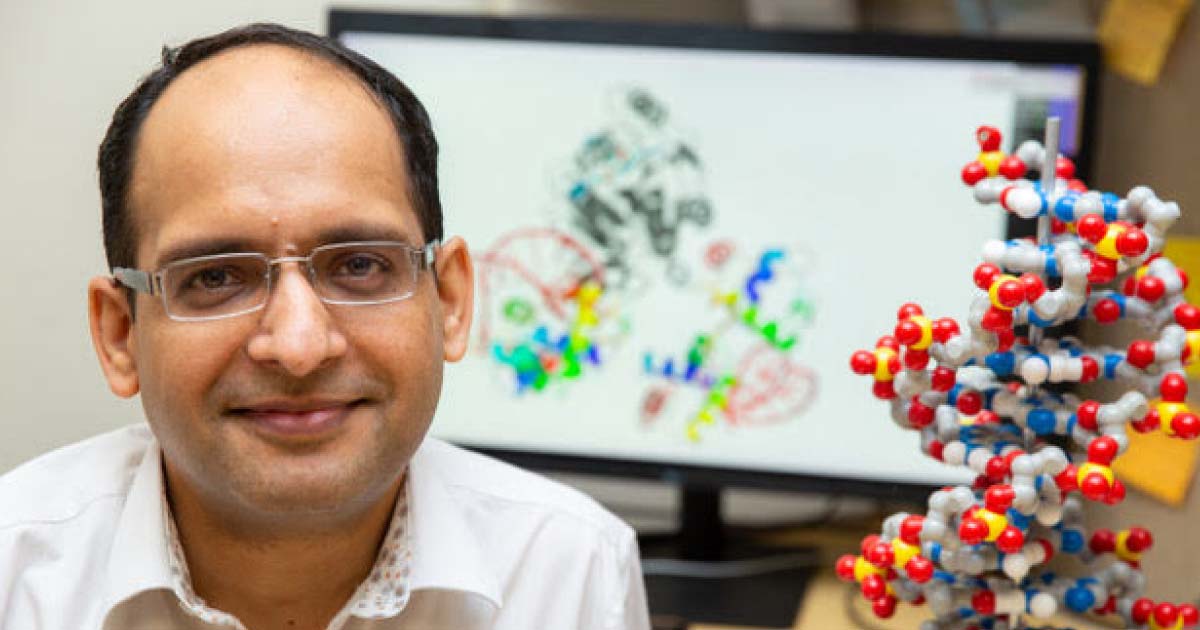
Category: Medical & Molecular Sciences

Bacterial Strategies to Confront Mutant Viruses
August 09, 2022 Written by Colin Heffinger | Photo by Ashley Barnas
A perpetual war rages between bacteria and phages as bacterial cells adapt and engage various defense systems to protect themselves from these foreign invaders.
Phages are viruses that infect and replicate within bacteria using their DNA. When this viral DNA enters a bacterial cell, it sickens the host, stealing all its energy and resources to make more copies of the phage. When the cycle is complete, these new viral particles break free from the dead bacterial cell which further expands their population exponentially.
In this arms race with phages, bacterial cells have developed their own arsenal to combat these threats. Called CRISPR systems, they operate like an immune system to adapt, process, and interfere with foreign genetic material. To interfere with foreign genetic material, the CRISPR systems are engaged to mutagenize their DNA and escape infection.
Vijay Parashar, Assistant Professor in the Department of Medical and Molecular Sciences, has studied how bacterial CRISPR systems communicate internally as part of his larger research focused on laying foundation for development of robust phage therapeutics as better alternatives to antibiotics. Parashar’s latest research article explores how bacterial CRISPR systems, Type I and Type III, communicate to defend bacteria against mutant phages.
Type I and Type III CRISPR Systems, Versatile Bacterial Tools
“CRISPR has two major functions within cells,” Parashar said. “One is ‘phage memory' acquisition that helps bacteria to ‘remember’ if a particular virus has infected it in its past. Secondly, ‘recognition’ serves as a function because the cell needs to determine if DNA is vital or foreign.”
While phage memory acquisition involves storing snippets of phage DNA into bacterial genome, recognition of a phage upon second attack is conducted using this stored phage memory.
To effectively combat phages, bacteria use Type I and Type III CRISPR systems to produce proteins that bind to the viral DNA or RNA. The Type I system is targeted towards DNA, efficiently degrading it when it enters the cell. If this system fails, the Type III system engages in the same process but to detect the RNA of the virus – which is produced during the later stages of infection by the DNA virus.
“These systems are working in succession,” Parashar said. “The Type III system is engaged to further combat Type-I system adaptation by the phage.”
Exclusively during the phage RNA detection by Type III systems, bacteria produce second messenger signal molecules called cyclic tetra-adenylates. These molecules are thought to mediate processes of self-sacrifice by the infected bacterial cell, so that the virus is quarantined to ensure the rest of the cells in the bacterial colony survive. Parashar’s team was determined to better understand what other functions are served by cyclic tetra-adenylates when the Type III system already has the proteins needed to eliminate infection. Parashar’s laboratory found that cyclic tetra-adenylates are involved in a new function known as transcriptional regulation.
“We discovered that cyclic tetra-adenylates target a new category of proteins, called transcriptional factors, known to acquire the ‘phage memory’ and engage the Type I system,” Parashar said. “The Type I system then uses this ‘phage memory’ to prevent future attacks from this particular mutant phage by destroying its DNA. This enables the Type I system to identify the mutant virus during future infection before it makes its RNA, making the bacteria more robust against previously encountered mutant viruses.”
Impact of Thinking Capabilites
To determine exactly how cyclic tetra-adenylate binds to the transcriptional factor to regulate it, Parashar’s team combined the three-dimensional crystal structure of these molecules together and analyzed their connection points. This involved techniques such as cloning, expression, and purification to prepare proteins for structural biology. The laboratory also conducted a variety of assessments to understand different levels of impact from these points.
“Ultimately, we discovered that binding of the cyclic tetra-adenylate signal significantly changes the conformation of the transcription factor. This is currently expected to follow novel alternative models for transcriptional regulation that are being studied in the laboratory,” Parashar said.
“This is an example of how bacteria use their second messengers like thinking capabilities to connect different proteins to pathways like a bacteria logic board designed to facilitate resistance to viral infections," Parashar said. “Such studies help scientists understand how second messengers could improve the bacterial defenses and are crucial to guide the design of more robust phage-based therapeutics against bacterial infections.”
